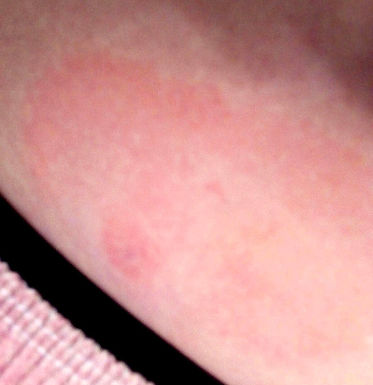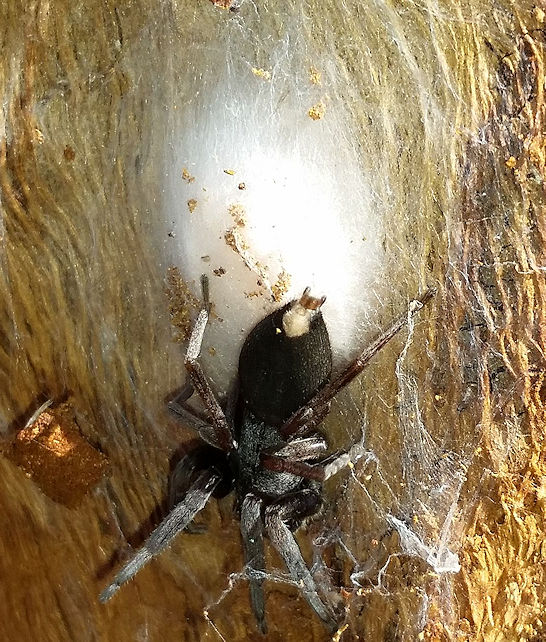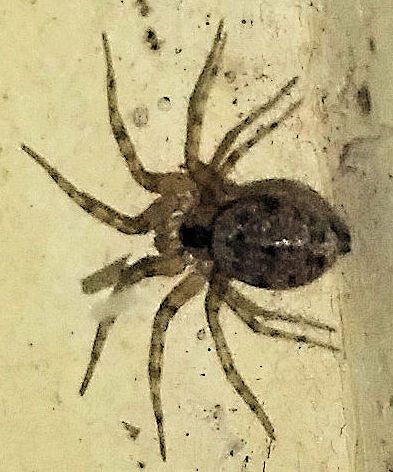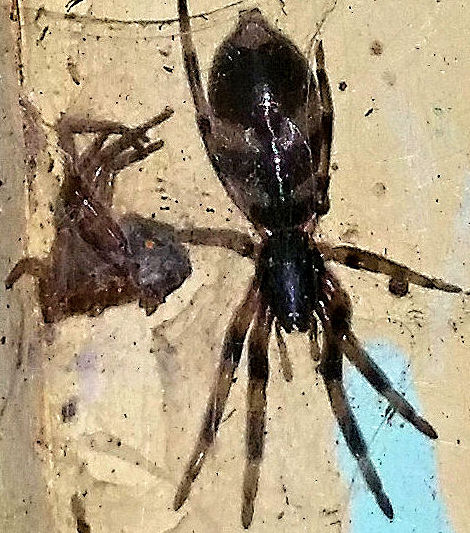 Bite with surrounding skin reddening
Bite with surrounding skin reddening White-tail spiders (Lampona species) are greatly feared with many believing that their bites can cause nasty suppurating (word of the week) and necrotic ulcers. Yesterday I was told that this is caused by venom of daddy longlegs that the white-tails eat.
As most white-tail bites occur in summer/autumn inside the house and in the evening, now is a good time to set the record straight.
A great study of 190 bites that were identified as being caused by white-tails makes interesting reading. In brief there were no necrotic ulcers, and conclusions were:
Conclusions: Bites by Lampona spp. cause minor effects in most cases, or a persistent painful red lesion in almost half the cases. White-tail spider bites are very unlikely to cause necrotic ulcers, and other diagnoses must be sought.
The image on the left is typical of bites that a certain daughter regularly receives on body parts. She is yet to die or develop ulcers, despite cries to the contrary.
The vast majority of white-tail bites are caused when the spider is trapped between bedsheets/ towels, and clothes and the body.
So if you want to be bitten regularly, be like said daughter and sleep on a mattress on the floor near an external entrance, don’t make your bed, and leave clothes/towels etc on the floor. Having said that, I do a fair bit of those activities and am rarely affected.
We have had 2 white tails in our lounge in the last 2 weeks so they are common in summer, but so are other spiders. There are more spiders that hunt without using webs than do, and male spiders travel around at night looking for a female.
I put a glass over them with a sheet of paper underneath and turf them all outside.
There are many species of white-tail spiders in Australia but the most common one in WA is Lampona cylindrata. White-tails are common but rarely seen outside the home because they hunt at night and generally hide under bark etc. during the day. Bite risk in the bush is almost nil unless you choose to sleep there.
White-tails construct a sac-like web to hide in, and females also construct a flat circular egg sac that they guard until the young emerge
White-tail spiders hunt other spiders. My spider-friendly outdoor dunny enables me to study them on a daily basis. One day I saw a white-tail deliberately leap into another spider’s web and then eat it when the poor occupant came to claim its prize.
A few days ago I was inspecting a dinky little wall spider in its web, but the next day there found a white-tail with sucked- out dinky spider body.
I have friends who revel in spider hating, but overall they (spiders) are great world citizens that deserve admiration.


